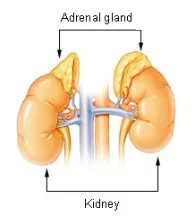
Hair Life And Maximum Hair Growth
Hair Life And Maximum Hair Growth
The life of every human hair will determine whether the strand will thrive and grow to it's maximum length or shrivel up before falling out.
The papillae, which is the delivery system for nutrients received by each follicle, has an accelerated rate of activity. It is one of the most rapidly metabolizing organs in the human body.
The papillae must receive large and consistent supplies of nourishment in the form of vitamins, nutrients and oxygen. The vitamins and nutrients come from food as well as supplemental vitamins and nutrients like those provided by formulations like HairTopia vitamins, herbals and amino acids.
This papillae nourishment is received in the form of blood carried by the dense network of capillaries located in the cranium.
These dense networks of capillaries carry an extremely rich supply of blood. Indeed, the scalp which rests on top of the cranium has the most intricate network of blood vessels in the body. The scalp is covered with human skin which is one of the body's major organs.
Skin, like the papillae, also has a constant and enormous demand for blood. It's allocated from one-half to two-thirds of the body's total blood supply.
Hair which has already emerged from the scalp is considered dead cells while hair still underneath the scalp is still alive. In order for individual strands of hair to be healthy and vibrant the papillae must be engorged with blood.
The life giving blood allows the papillae to create new life. The blood triggers the production of cells needed for the ongoing growth and replenishment of hair which emerges from the scalp.
If the capillaries carrying blood to the papillae are damaged in any way, the papillae will fail to produce cells necessary to grow healthy hair and replace any hair lost in the normal growth cycle.
Some of the ways the capillaries can be damaged include constricted capillaries or impaired blood circulation. Damaged capillaries can starve the papillae. If the starvation of the papillae continues indefinitely, thinning or hair loss can occur.
If proper replenishment of the papillae does not occur in a timely manner, the papillae will being to atrophy and product hair which is known as vellous. Typically vellous hair looks like fuzz on a peach. This type of thin fuzzy hair can often be found in men with male pattern baldness.
The good news? Although malnourished papillae can atrophy and fall dormant, research has demonstrated that the papillae can be reinvigorated and returned to complete normalcy when flooded with nutrient rich blood. Also, the papillae can be reawakened with proper massage and stimulation.
Research has shown that the papillae are resilient and are not easily killed. The formation and growth of hair cells depend on the proper nourishment of the papillae, and the vitality of the papillae depends on their blood supply.
Papillae engorged with blood results in the creation of new life. What makes hair thick and healthy? A rich supply of blood carrying the proper vitamins, nutrients and oxygen. Also, increasing the circulation to the scalp with proper massage techniques will also help to encourage healthy vibrant hair which continues to grow.
Ironically the crown of the head is one of the body's extremities, like the fingertips and the toes. The crown, like the other extremities of the body, is the hardest place for the blood to reach.
That's why more people often start to lose their hair at the crown. This is one of the first places to show the effects of deteriorating blood circulation. Hair is nourished by blood reaching the scalp.
If there is anything which can slow the course of hair thinning or loss, it's life giving blood. Indeed, blood provides all the necessary nutrients to nourish the papillae. When blood is providing proper nourishment to the papillae it encourages a long, healthy hair life as well as maximum hair growth.
Blood is the ultimate ingredient of long and healthy hair life.Social Media Network Information
Please follow us on Twitter at: https://Twitter.com/HairBoutique. I look forward to meeting new people from all walks of Twitter and learning from their Tweets.




















